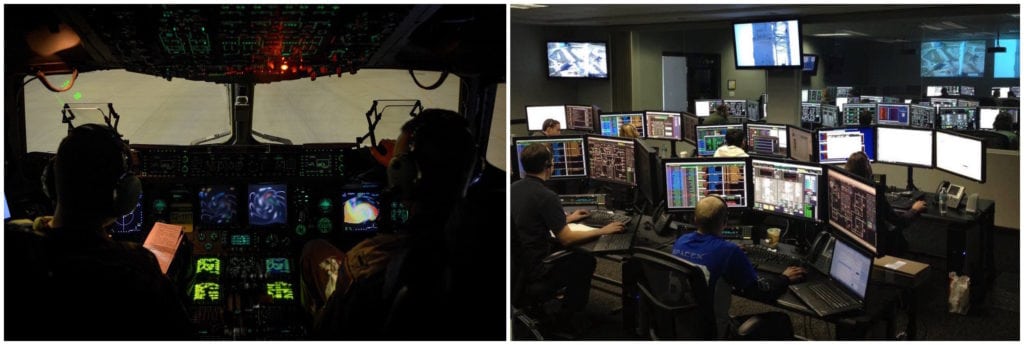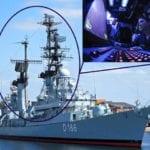It’s Time to Get Ready for New ADS-B Standards
US-based aircraft have a new equipment mandate to improve surveillance and communications. The deadline is fast approaching, but operators have numerous options to get compliant.
New ADS-B Standards
Nearly a decade ago, the Federal Aviation Administration (FAA) set in place a timeline to transition from radar to next-generation, surveillance-based Automatic Dependent Surveillance-Broadcast (ADS-B) to manage the growing volume of air traffic. By January 1, 2020, all aircraft must be equipped with an ADS-B system. The deadline is now fast-approaching, yet an estimated 100,000 aircraft have yet to make the transition. In recent years, new products have been developed to ease the transition, ranging from cables and connectors that allow new components to be integrated into existing systems, to all-in-one replacement systems.

ADS-B technology provides pilots with the same satellite-based visual information as air traffic controllers, enabling improved accuracy, integrity, reliability, and safety.
What are the advantages of ADS-B? The new technology offers improved accuracy, integrity, and reliability via satellite-based information. It will enable more aircraft to navigate an increasingly crowded airspace without sacrificing safety. Aircraft will also be able to take more direct flight patterns, saving time and fuel and reducing emissions. Pilots will see the same visuals that are available to air traffic controllers, including other aircraft, weather, and hazards in their flight area and on the ground, which increases safety during takeoffs and landings, as well as in-flight. Additionally, it expands the satellite-based information to areas that were previously not served by radar, including parts of Alaska and the Gulf Coast where ground equipment isn’t feasible. ADS-B services are available now across the US. (See a coverage map here.)
Aircraft that fly in international airspace will need a 1090ES datalink with a Mode S Extended Squitter transponder to be in compliance, in additional to the ADS-B. Europe, Australia, and Mexico have deadlines for compliance in mid-2020. (See international mandates and proposals here.)
To achieve compliance, aircraft must be equipped with a Version 2 ADS-B Out transmitter and a compatible GPS Position Source. Aircraft operating above FL180 (18,000 feet) or internationally must be equipped with a Mode S transponder-based ADS-B transmitter. Aircraft operating below 18,000 feet and within US airspace must be equipped with either a Mode S transponder with extended squitter or universal access transceiver (UAT) equipment. Mixing and matching GPS systems with ADS-B transmitters in the field is not permitted unless the equipment pairing was shown to be compatible via a previous certification effort with the FAA. Aircraft that are not complaint by the deadline will not be able to fly in Class C airspace, within 12 nautical miles of Class B airspace, or above 10,000 feet mean sea level (MSL).
The new system consists of two parts: ADS-B Out and ADS-B In. ADS-B Out is a surveillance technology that tracks an aircraft’s position, velocity, and altitude, and reports that data to air traffic control once per second. This equipment must be mounted on the panel. ADS-B In enables an aircraft to receive transmissions from ADS-B ground stations and other aircraft. This equipment is available in a panel-mountable or portable format. Integrated ADS-B In/Out products are also available.
The electronics industry has been working to provide owners of aircraft of all sizes with a range of options. As usual, reducing systems size and weight is a key consideration, even as the equipment handles higher speeds and new capabilities. Companies such as Carlisle Interconnect Technologies offer products and guidance to make the transition easier.
“We are beginning to see increased activity in the business and general aviation markets where there are many individual aircraft owners who have not yet done the upgrades,” said Jeff Behlendorf, director of product management, Integrated Products, Carlisle Interconnect Technologies. “Many large fleet operators have already either upgraded their aircraft to comply with the mandate or they have plans in place to meet the deadline.”
The company offers loose parts, including cable assemblies, connectors, and other components suitable for aerospace applications, as well as the expertise to help owners determine what options are best-suited to their specific aircraft or fleet. Aviation specialists like Butler or C&L Aviation offer a kit and installation services. Small and individual owners/operators may even source parts for a fully-compliant DIY solution. The right solution for each aircraft will vary. A glider will have different size, weight, and performance needs than a commercial jet. So, a complete hardware replacement may be appropriate for some aircraft, while others will swap out only specific components. Some owners will want a custom upgrade path, built of individual elements. The Aircraft Owners and Pilots Association offers this online tool to determine what equipment is needed for an aircraft.
Companies including BendixKing, Appareo, and Garmin offer combined in/out transponders that can replace an existing non-compliant transponder on the control panel. These combined transponder units utilize an ARINC-type connector such as those made by Amphenol, ITT Cannon, Radiall, and others to facilitate fast and easy replacement. Other transponders may depend on 9- and 25-pin D-sub connectors. In addition to connectors, many aircraft will also need to upgrade cable assemblies and wiring.

WireMasters offers a range of RG400 products that meet the new ADS-B standards.
“In the past, the coaxial cable RG58 was fine for avionic systems, but with the new upgrades needed for ADS-B, the transmit power has a significant increase and therefore needs a coaxial cable enhancement,” said Rush Holladay, business development and marketing manager at WireMasters, which stocks QPL certified M17/128-RG400 coax cables to replace RG58 coax cables in avionics systems. “Many are choosing military specification M17/128-RG400, but other cables would work as well. They should consider their wiring needs in coherence with equipment upgrades and make sure they place it all on order at the same time, to make sure they aren’t facing significant lead times for any of the products they need to complete this upgrade.”
Connector, cable, and cable assembly companies are taking an active role in educating their customers about the transition process. By working closely with customers, they can help specify the appropriate upgrades for aircraft. With many years to prepare, electronics companies say they have the inventory their customers need in stock, but still urge aircraft owners and operators to make decisions as soon as possible in order to meet the deadline.
“The most important thing is not to wait until the last minute,” said Behlendorf. “Hangar space at maintenance facilities to get the upgrades done is already showing signs of being in limited supply. That is likely to get worse as the deadline gets closer. It’s important to remember the FAA has indicated that without the upgrade, access to busy airports will be restricted and aircraft that have upgraded will get priority with air traffic control.”
Interested in a specific market? Click a market below for current articles and news.
Automotive, Consumer, Industrial, Medical, Mil/Aero, Datacom/Telecom, and Transportation
- News From Hannover Messe 2024 - April 30, 2024
- Where in the World is Amphenol LTW’s Luc Kan? - April 23, 2024
- TE Connectivity’s Sustainability Efforts Pay Off - April 23, 2024












